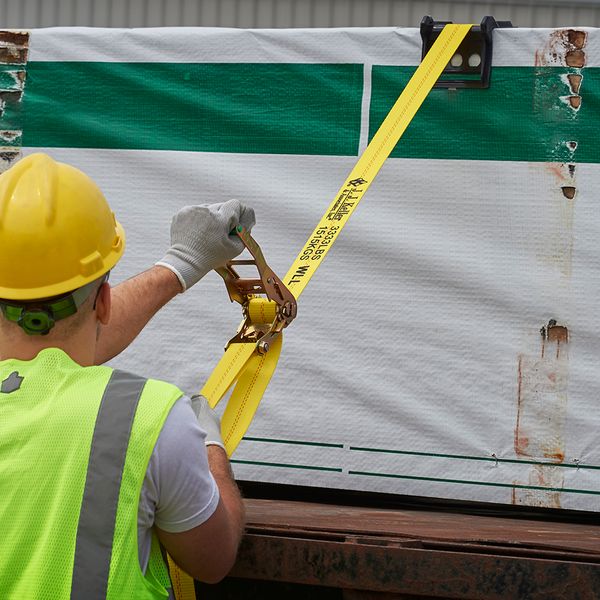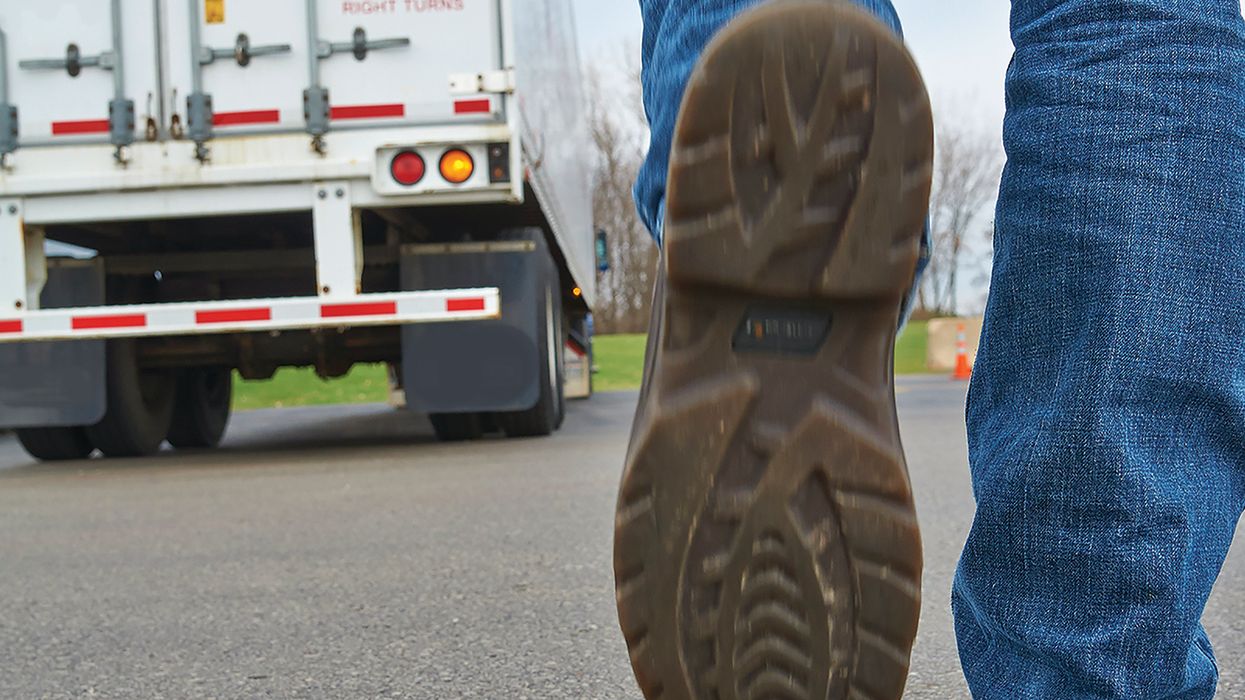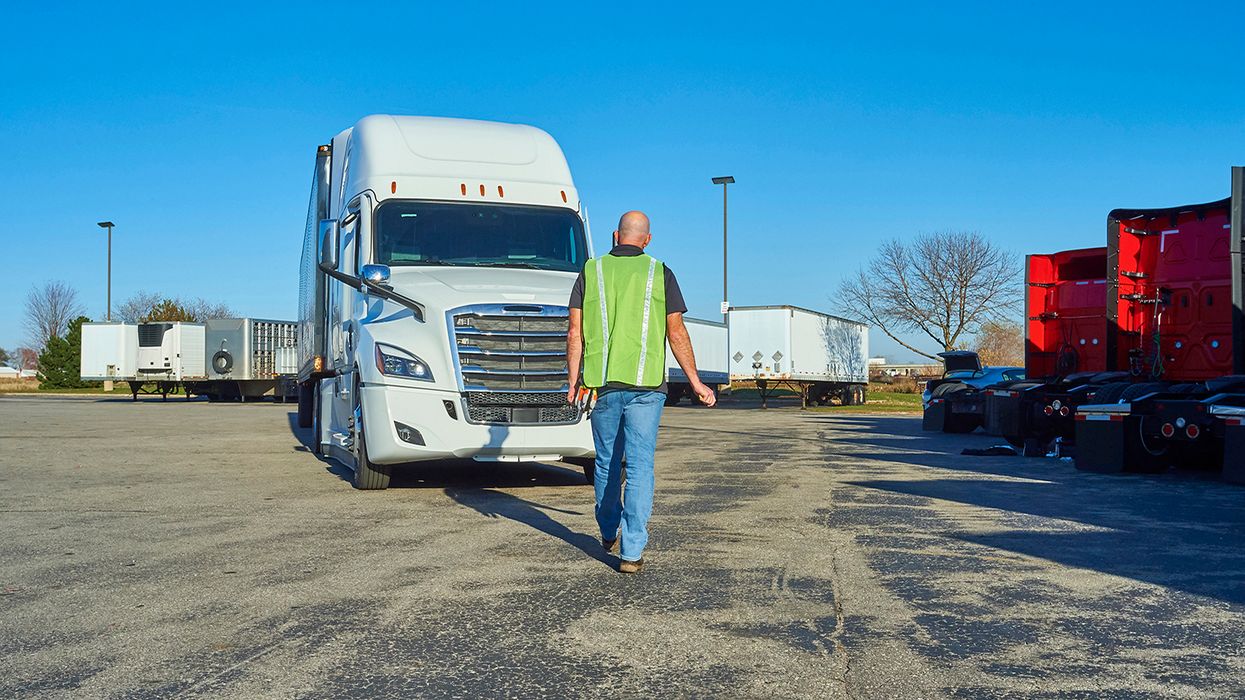A ‘weighty’ issue: The strength of your securement system
Among the top cargo securement violations that commercial truck drivers receive year after year are those for failing to use enough tiedowns and failing to adequately secure their cargo.
Falling cargo can kill, making these violations among the most dangerous. But they do raise a question: How many tiedowns are enough?
The answer, of course, depends on many factors because every load is unique. But federal safety regulations do set minimum standards that every driver must follow.
The key word here is “minimum.” The minimum number of chains or straps you need might be enough to prevent a violation, but it may not be enough to guarantee safety. It’s never a bad idea to go above and beyond the regulations when securing cargo.
Find your weakest link
Making sure that you use enough tiedowns — and that those tiedowns are strong enough for the task — requires an understanding of two key concepts: the working load limit (WLL) and the aggregate WLL.
The WLL is the maximum load or force that can be applied to any part of a cargo securement system (i.e., chain, binder, hooks, anchor points, straps, etc.).
Who decides the WLL? The manufacturer does, after rigorous testing to see how much force can be applied before the device fails. (The WLL is typically much less than the actual breaking point, though, to provide a safety cushion.)
As the saying goes, a chain is only as strong as its weakest link, so the WLL of a complete tiedown assembly is the WLL of its weakest component. For example, if your chain’s WLL is 11,300 pounds, your binder’s is 6,600 pounds, and your trailer’s chain anchor is 5,400 pounds, the whole tiedown assembly has a WLL of only 5,400 pounds.
The WLL may or may not be marked on each piece of tiedown equipment. If a tiedown is not marked, refer to the WLL tables found in the regulations, 49 CFR 393.108. Note that if an officer can’t tell the grade or the WLL of a chain, they must treat it as a Grade 30 chain. Also note that unmarked tiedowns may not be used in Canada.
Other factors
Making sure that the aggregate WLL is at least one-half the weight of the cargo is an important step toward compliance and safety, but it’s not the only step. Other factors that can impact the number of tiedowns needed include the length of the cargo, whether its forward movement is blocked, and whether any commodity-specific rules apply (like those for logs, lumber, or metal coils).
When in doubt, always go above and beyond the requirements to make sure your cargo is completely secure!
Add ‘em up
The working load limit of each tiedown assembly is used to determine the “aggregate” or combined WLL of all the tiedowns together. Why is that important? Because if the aggregate WLL is not at least one-half of the weight of the cargo being secured, you could face a citation. For example, a piece of equipment weighing 20,000 pounds must be secured with tiedowns having an aggregate WLL of at least 10,000 pounds.
To figure out the aggregate WLL, you need to add together the contribution of each individual tiedown, depending on how each tiedown is attached:
- For a tiedown routed from an anchor point on one side of the vehicle through, over, or around the cargo and attached to the other side of the vehicle, you can count the full WLL (100%). These are called “indirect” tiedowns.
- For a tiedown with one end attached directly to the cargo, or that has both ends attached to the same side of the vehicle, you can only count half of its WLL (50%). These are called “direct” tiedowns.
In effect, you need two direct tiedowns to do the work of one indirect tiedown. Let’s revisit that 20,000-pound piece of equipment, which you are going to secure using 2-inch straps with a WLL of 2,000 pounds each (and let’s assume the straps are the “weakest link”). Remember, the aggregate WLL must be at least one-half the weight of the cargo, or 10,000 pounds.
If you throw your straps over the top and secure them as indirect tiedowns, you will need at least 5 straps to do the job (10,000 lbs. ÷ 2,000 lbs. = 5). If you attach the tiedowns directly to the cargo, you’re going to need twice as many, or 10 straps, because you can only count one-half the WLL of each (10,000 lbs. ÷ 1,000 lbs. = 10).
What if the result of this math is not an even number? You must round up. For example, cargo weighing 20,100 pounds will need at least 6 indirect straps in this example (10,050 lbs. ÷ 2,000 lbs. = 5.025, which rounds up to 6).
Key to remember: Knowing the working load limit (WLL) of your cargo securement system is key to verifying that you have enough tiedowns for the load — and for keeping the public safe.
































































